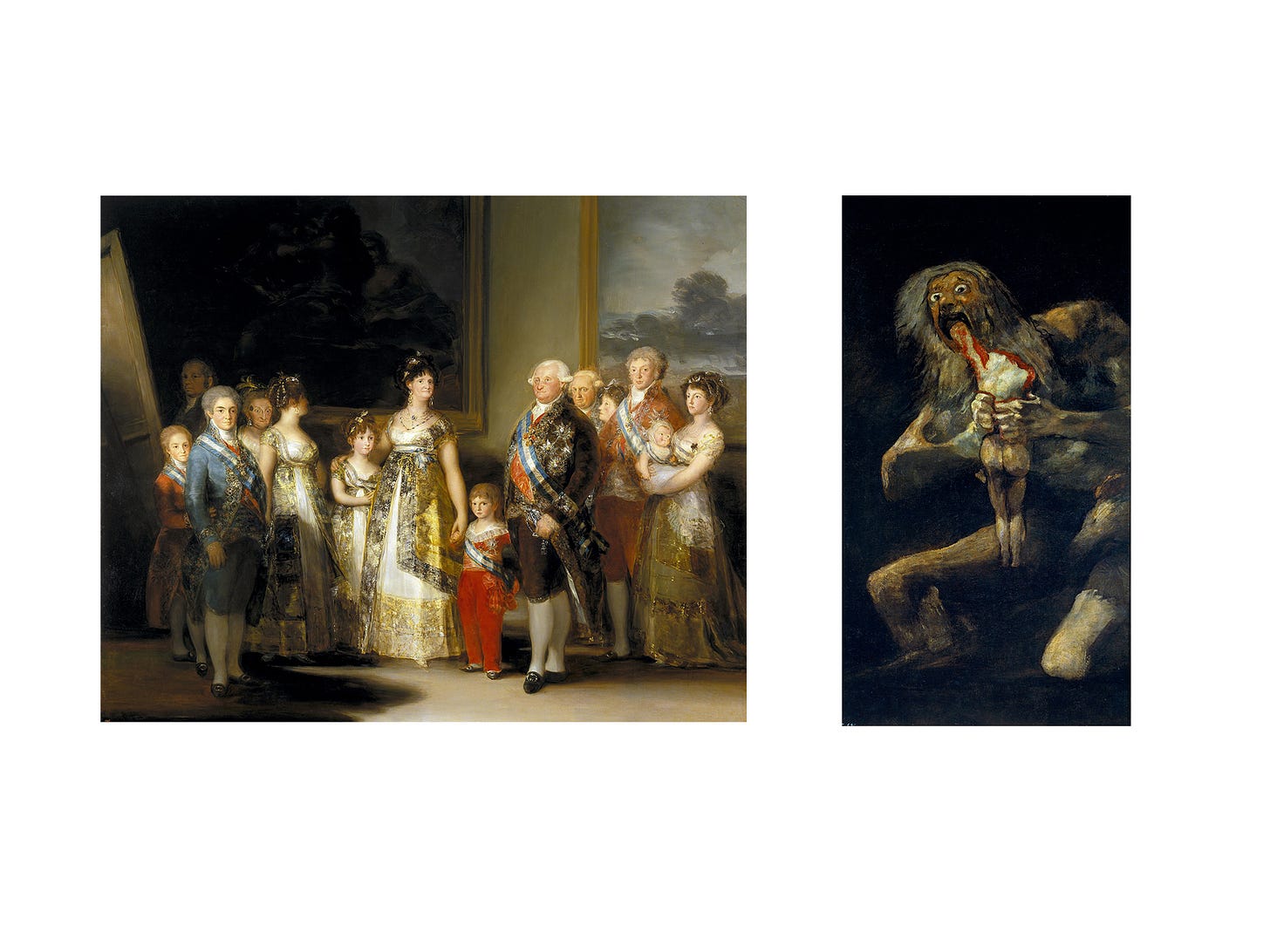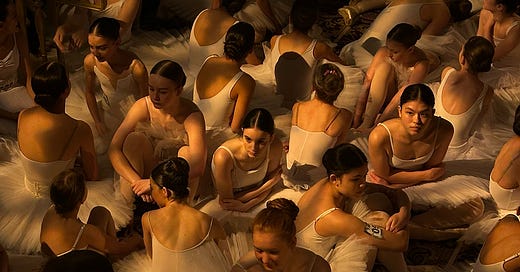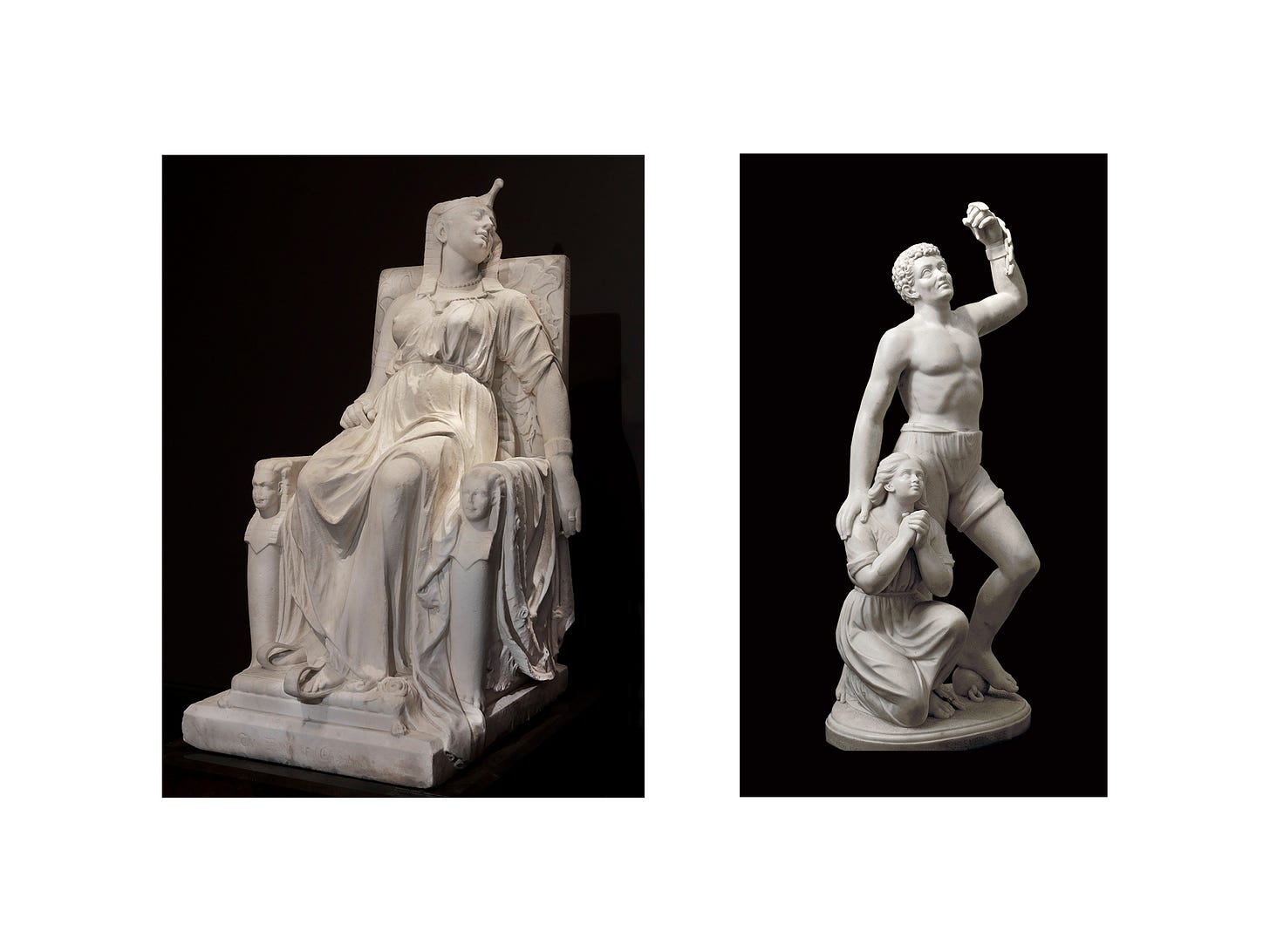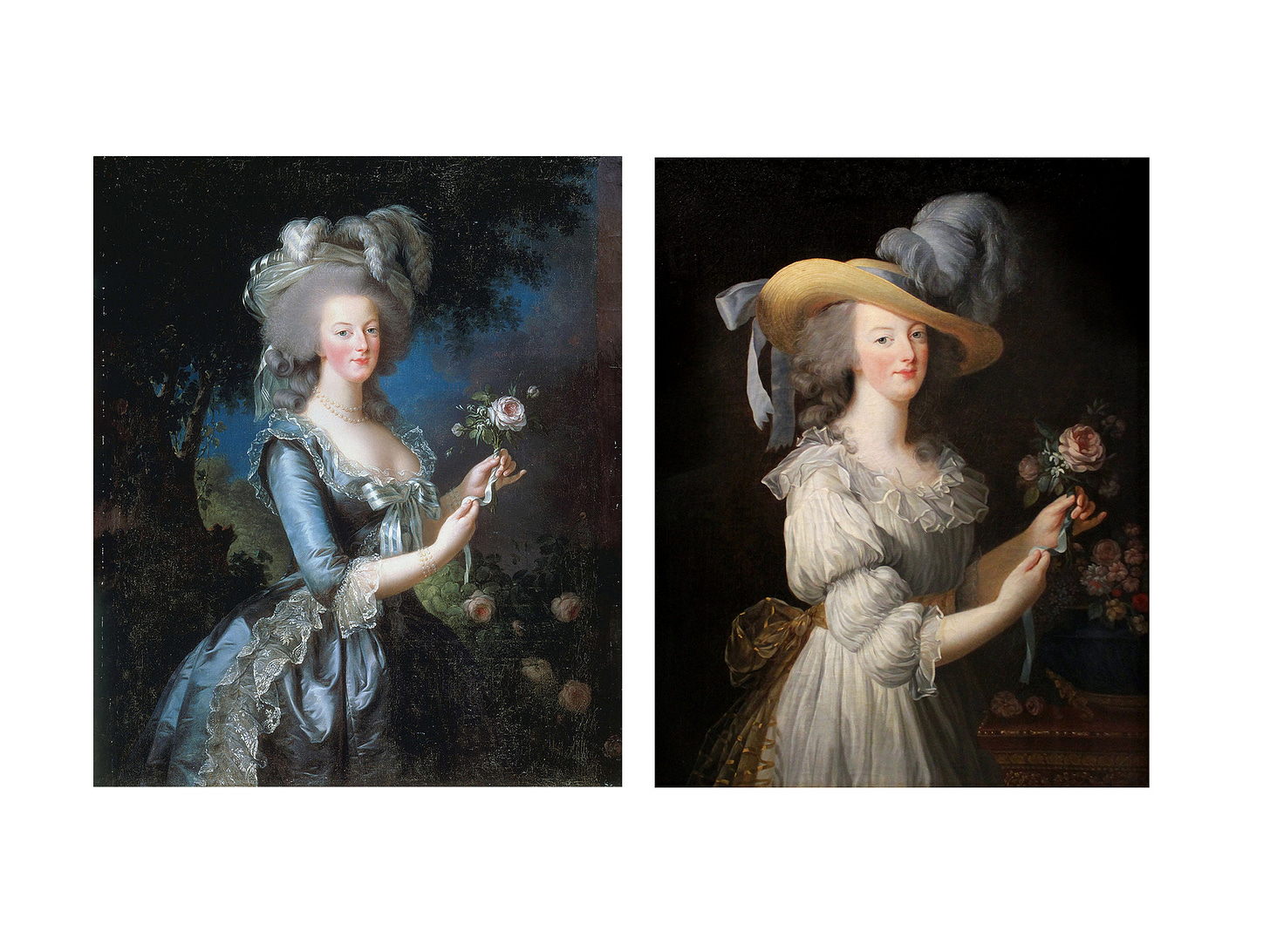Selling Art, Keeping Soul
Rejected work, balancing paying the bills with personal fulfillment, and art history
Client. Patron. The person paying your electricity bill.
They have the final say. And that final say can sometimes make our inner artist scream in frustration.
Do they not see the play of light across the subject’s face? The emotion in the blur and motion? The joyful turn of phrase that brings a smile to the reader’s face?
The majority of clients default to safe. And safe often means what has worked in the past. It must be on brand.
Of course, not every client resists risk. Some push us further, seeing potential we didn’t notice ourselves. And sometimes, the real struggle isn’t between artist and client—it’s between artist and self-doubt.
But that’s a thought for another time.
Now, I am a brand builder, so I get it. But even with research, examples, and feedback from the target audience, sometimes your best work is looked at, appreciated, and then—after a night of sleep—you receive the dreaded email:
I thought about it overnight…
I spoke with my sister, who told me her hairdresser’s brother-in-law’s friend once…
It doesn’t matter how they got to the conclusion.
Or rather, it does matter, but what truly counts is that they’ve arrived in the land of safety.
And as the client, they are entitled to decide. It is their business, after all. For some, it is their hard-earned money leaving their account; for others, it’s a decision they must justify to a boss who doesn't like risks.
Now, this moment can really impact your relationship not only with your work but with your art. These rejections can fan the flame of doubt—doubt about ability, vision, execution. Am I losing my voice? Did I not understand what they needed?
Enter fear, shame, and doubt, stage left.
I’m here to tell you: don’t take it personally. It is not your business.
This has been my mantra for years—for my sanity. I always care and give my best, but they hold the power in the end. And that’s fine. They pay the invoice. I pay my power bill.
Thank you. Come again.
It means remembering that I have free agency. I can go outside and take photos of whatever I want, for whatever reason I feel. I have words boiling over in my mind daily, and if someone else doesn’t want them, I won’t let them wither on the vine.
I sit down, and I write to you.
Finding a way to honour creativity and ideas matters—it can bring deep fulfilment, and in some cases, help move one toward a dream.
A dear friend and professional photographer, Des Iles, once told me that when selecting images for clients, she would set aside shots she loved but knew wouldn’t work for the project brief. She still edited them, respecting her work as an artist, which meant taking time with images that didn’t work for the client but worked for her.
Over time, she realized something: it was often the in-between shots—the quiet, unplanned moments—that made her love photography. And by sharing them, she built a client base that appreciated them too.
She no longer holds back. They are part of what she delivers to clients because they now also respect her vision as a photographer.
Then there’s @sinthecity, a photographer I discovered on Substack. She runs a Rejected Shots series, sharing images that didn’t make the final cut. Recently, she posted one that made me gasp.
A dancer, arms crossed, looking into the distance. Tension in her shoulders. A sea of tutus forming a pattern around her. Shadows adding drama—perhaps an audition? An exam?
It is a photo full of quiet emotion. And yet, it was a rejected shot.
Rather than letting it disappear, she shared it—offering it freely, a small act of defiance against the idea that only safe work deserves to be seen.
I decided years ago that I am my own client. By that, I mean I take my own art as seriously as I take client work.
I am my dream client.
I let myself go down rabbit holes—so long as I meet my deadlines. And what are my deadlines?
Write something every week.
Edit a photo.
Bring my camera on the hike.
Learn something.
And when, in a mistake or a moment of wild creative thrashing, something good and imperfect arises—I share it. I don’t worry about being on brand. I create.
If you are like me—or hope to make an income from creativity—you know this balance is a tightrope walk. Often, the reason a client wants to work with me is that I am a creative person. They liked what I did.
So I can’t dampen one to stoke the flames of the other.
Even those rare, fortunate artists who seem to have no clients still answer to someone. Don't let them fool you. The client remains the buyer—whether it's the person licensing their work, choosing to publish them, or buying their prints. Even when they fund themselves through grants, they must still demonstrate their vision to secure that support.
We all have pesky power bills.
And like them, we will all have moments when we sit to write or lift the camera and wonder: Do I make what sells, or what speaks to me?
It’s not always an easy balance.
Des finds her equilibrium in personal travel projects. She became a designer in the evenings and weekends, taking a course, and recently created a magazine layout for herself. But when she talks about her client projects, it is with excitement and energy. They complement each other. Caring for her personal creativity allows her to show up more fully for clients.
She loves both.
Maybe that’s the trick—realizing you don’t have to choose.
You can make a living and make something that matters.
Just don’t wait for permission.
Commissioned vs. Personal Work Examples
I couldn’t help myself. Below are three historical examples of artists navigating the tension between what was expected of them and what they truly wanted to create—each in their own way.
Goya’s Black Paintings were never meant for public view; painted directly onto his walls, they reflect a mind grappling with illness, war, and disillusionment—whether they were an act of defiance, an unfiltered release, or something else entirely is still debated.
Edmonia Lewis worked within neoclassical forms that patrons accepted, but infused her sculptures with subjects that challenged racial and social expectations.
Meanwhile, Élisabeth Vigée Le Brun had to literally repaint history, replacing a controversial portrait of Marie Antoinette with one that fit the monarchy’s ideals.
Francisco Goya (1746–1828)
Francisco Goya devoted much of his career to painting formal portraits for Spanish royalty and nobility, creating refined works that pleased his powerful patrons. In his later years, however, disillusioned and withdrawn, he covered the walls of his home with the Black Paintings—haunting, nightmarish visions exploring madness, death, and human suffering—created purely for himself with no intention of public display.

Edmonia Lewis (1844–1907)
Edmonia Lewis, a Black and Indigenous sculptor, achieved recognition by creating Western neoclassical sculptures that appealed to white American and European patrons. Yet in her personal work, particularly sculptures like Forever Free (1867), she explored Black liberation and identity. These pieces challenged the sanitized narratives of racial uplift expected by the art world—a world that routinely overlooked artists like her—and made powerful personal and political statements.
Élisabeth Vigée Le Brun (1755–1842)
As the official portraitist of Marie Antoinette, Vigée Le Brun mastered the art of creating flattering, politically strategic portraits for the French court. However, when her 1783 portrait of the Queen in a loose muslin dress (en Gaulle) was met with public outrage for appearing too informal, she was forced to repaint the Queen in a more traditionally regal blue silk gown. This incident illustrates how artists must often modify their work to meet patron expectations—even when their artistic vision pushes boundaries.
Personal Work
A moment of stillness before the tide returns—captured in early morning light while beach camping on Vancouver Island.
I'm a complete fiend for random facts and research (as if you can't tell). I'm currently falling down the rabbit hole of Obsidian, creating a space for two research projects I'm kicking off. First, I'm exploring my personal goals around grant applications and the future of my art and writing. Second, I'm diving into fiction writing. Being Polish, I wish I knew more about pre-Christian religions and Slavic culture in general. I quickly realized my notes were a bit of a hodgepodge when I came across the video below—it felt like a lightning strike.
Slower and more meaningful content consumption, plus a way to organize my thoughts and writing? Sign me up.
Further Reading
Francisco Goya’s Black Paintings – Museo del Prado & Wikipedia
Edmonia Lewis: Biography & Works – Smithsonian American Art Museum & Wikipedia
Élisabeth Vigée Le Brun & the Spanish Royal Court









Thanks for your text. Here is my approach:
I have developed a very simple perspective on this. So simple, in fact, that I sometimes worry I may have overlooked something crucial, like the need for food, shelter, or the ability to tolerate other humans. But no matter, I practice something I completely unironically call “the royal arrogance of the artist.”
Whenever a client approaches me, I expect - no, I don’t politely request, I don’t wistfully hope, I EXPECT! - their trust. Trust in my artistic abilities, trust in my visionary and dreamlike power. After all, I am the artist, and I have spent years strengthening and nurturing these skills, rather than, say, learning how to file taxes properly.
No matter what my client thinks their rights are or what they imagine their money entitles them to, their influence ends at the moment they specify the subject, size, approximate colors, and the core message. At that point, they must simply let go and trust. And, of course, pay in advance, because I have already spent three lifetimes chasing unpaid invoices, and if there’s going to be a fourth, I sincerely hope it involves an inheritance and a tropical island.
And in 30 years, except for a single exception (you know who you are), my clients have always been satisfied.
By “the royal arrogance of the artist,” I mean that an artist must uphold their dignity and honor at all costs, even if it means starving in a garret, though preferably one with decent Wi-Fi. A true artist, if necessary, would rather perish than be reduced to churning out “Live, Laugh, Love” wall décor on commission. And that, is where the genuine article differs from the multitude of well-meaning hobbyists who are quite content to paint whatever the masses demand.
Of course, another option is to categorically reject all commissions and simply create whatever one pleases, trusting that somewhere out there, in this vast and perplexing universe, a patron exists who will recognize and invest in my art. There aren’t many of these enlightened beings, but there are just enough to keep things interesting. This approach does, however, mean that occasionally a particularly beloved piece will fail to find a buyer. That’s fine. Off it goes to Marjory the Trash Heap. Future generations may never know what they missed, but that’s their problem. I had my fun, and I refuse to rent storage spaces just to accumulate unsold masterpieces like some sort of avant-garde dragon hoarding existential crises.
The royal arrogance of the artist demands difficult decisions. And yes, it would be lovely if I lived in a world where my art was universally recognized for what it truly is: a mirror of the soul and a heartfelt message to humanity. But alas, such a world exists only in some parallel dimension where people understand art instinctively and are also slightly better at using turn signals. In the meantime, I shall continue as I always have, happily, unapologetically, and with an unwavering belief in my own genius.